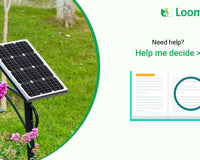Installing solar panels on a house with numerous trees around can affect the effectiveness of the solar system. Trees can cast shadows on the solar panels, significantly reducing their energy production. Shade on even a small portion of a solar panel can lead to a disproportionate drop in power output.
To maximize solar efficiency in such scenarios, several steps can be taken:
-
Site Analysis: Conduct a thorough site analysis to determine the extent and timing of shading throughout the year. This information can help position the panels where they'll receive the most sunlight.
-
Trimming: trim trees that cast significant shadows on the panels during peak sunlight hours. If necessary, consider removing trees that cause extensive shading.
-
Panel Placement: Position the solar panels in areas with minimal shading. Ground-mounted systems can be strategically placed away from shadows cast by trees.
-
Microinverters or Power Optimizers: Use microinverters or power optimizers for each panel. These technologies mitigate shading issues by allowing each panel to operate independently, minimizing the impact of shaded panels on the entire system.
-
Tilt and Elevation: Adjust the tilt and elevation of the panels to reduce the impact of shading. Panels at steeper angles can shed snow, debris, and shadows more effectively.
-
Tree Growth: Keep in mind that trees can grow over time, potentially affecting sunlight exposure. Regular maintenance is crucial.
While installing solar panels in a shaded area isn't as effective as an unobstructed site, it's still possible to generate some energy. Consulting with a solar professional who can analyze your specific situation can provide valuable insights into the feasibility and effectiveness of a solar installation in a shaded environment.












